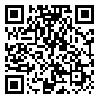Volume 32, Issue 2 (Summer 2008 2008)
Research in Medicine 2008, 32(2): 115-119 |
Back to browse issues page
Abstract: (14997 Views)
Background: The objective of this study was the evaluation of genovarum adjustment and the effect of distal part of osteotomy displacement and comparing it with other methods and determination of its complications.
Material and method: A total of 25 knees from 22 patients in 1381-1383 in Baghiatallah Hospital were undergone proximal tibia osteotomy by lateral closing wedge (Coventry) method with rigid fixation by T-plate and rapid range of motion (ROM). In all patients the distal of osteotomy part was displaced about 1 cm to proximal and was fixed rigidly with a T-plate. ROM and 50% weight bearing with 2 crutches were begun at second day after surgery. After 6 weeks both crutches were put away. Patients were visited again at the end of weeks 4, 6, 8, and 16 and tibio-femoral angle and ROM were measured and registered. Every probable complication and ::union:: at any time and patient’s satisfaction and the time of getting back to work were registered at the fourth month.
Results: The mean of genovarum was 12 degrees varus before surgery which was adjusted to 6.1 degrees valgus after surgery. The majority of patients were able to walk without crutches at the end of the second month. There was ::union:: in all patients at the end of the third month. At the end of the fourth month all patients got back to previous activities. There was pain in only one patient (2 knees), but it was milder than before and the patient was satisfied.
Conclusion: It seems this kind of operation is more advantages than other methods especially non-rigid fixation and casting in patients older than 40 with osteoarthritis and no tolerance to being immobilized in cast and also with high complication risks such as vascular thrombosis.
Type of Study: Original |
Subject:
Interdisciplinary (Educational Management, Educational research, Statistics, Medical education
Received: 2008/12/21 | Published: 2008/06/15
Received: 2008/12/21 | Published: 2008/06/15
| Rights and permissions | |
 |
This work is licensed under a Creative Commons Attribution-NonCommercial 4.0 International License. |


